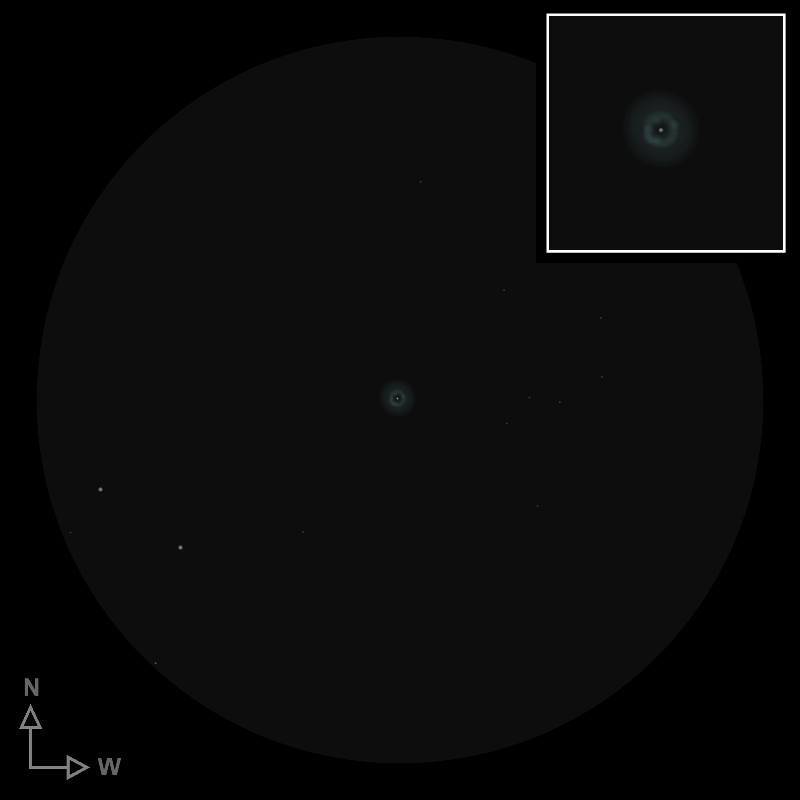NGC 1535
Sketch and Commentary by Eric Graff
NGC 1535
Planetary Nebula in Eridanus
Parks Astrolight EQ6 • 6″ f/6 Newtonian Reflector
7.5mm Parks Gold Series Plössl + 2x Barlow • 240x
Field of View 13′
Lumicon OIII Filter
31 December 2007 • 04:30-05:15 UT
Secluded in an out of the way region of meandering Eridanus, the planetary nebula NGC 1535 is lost in a world of its own, far from any conspicuous guide stars. It is unfortunate that such an exceptional object languishes in relative obscurity; it is, arguably, the finest deep-sky wonder to be found on the shores of the celestial river. I found this hidden treasure by centering my scope on 5th magnitude 39 Eridani (the brightest speck of light within a triangle formed by Gamma, the Omicron1,2 pair, and 53 Eridani) and sweeping 2½° due south.
At low to moderately high magnifications NGC 1535 appears as a slightly out-of-focus blue-green star of about the 9th magnitude. It is this low-power aspect that has earned it the moniker “Ghost of Neptune”. In the low-power, wide-field ocular the planetary is situated near the center of a ragged semi-circle of 8th-11th magnitude stars with a radius of about 30 minutes of arc.
To understand NGC 1535’s other nickname, “Cleopatra’s Eye”, you’ll need to push your scope to the higher magnification ranges. I used a 7.5mm Parks G.S-5 Plössl coupled with a Parks G.S. 3-Element 2x Barlow for a magnification of 240x in making the sketch presented here. Magnifications above 200x are generally required to separate the 12th magnitude central star from the bright inner ring. This ring is somewhat irregular, about 20″ across, slightly brighter on the eastern side, darker in the middle and surrounded by a faint, diffuse outer envelope to a diameter of about 45″ and elongated slightly toward position angle 35°.
Sir William Herschel discovered NGC 1535 on February 1, 1785 with his 18.7-inch reflector. The expansion velocity of the outer atmosphere of this dying star has been measured at 19 km/sec. NGC 1535 lies at a distance of about 5,200 light years; it actual diameter is about 1.2 light years. It is five times further away and 3 times larger than the famous Ring Nebula (M57) in Lyra.


Eric,
What a fine way to end a year. This planetary sketch is remarkable. It is indeed a nebula worth hunting down. Your narrative makes this post all the better. Great work and wonderful post.
Frank 🙂
Eric,
How beautiful!!!
Excellent sketchwork!
Was the OIII filter of great influence?
Rony